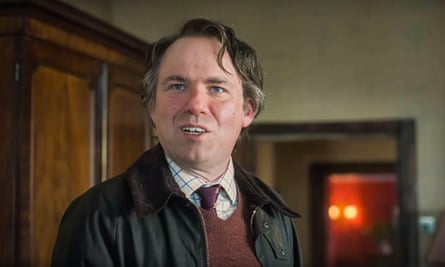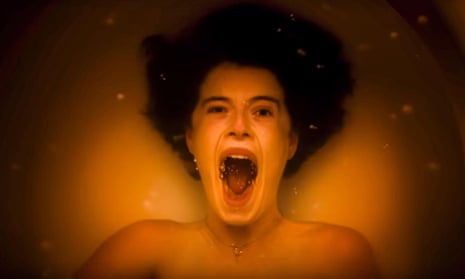The grim accusation about men – the one about them being all alike – might occur to you during this film, along perhaps with the shrill defensive hashtag #notallmen. It is an unsubtle and schematic but very well-acted Brit folk-horror pastiche from the writer-director Alex Garland; it feels like a reverse-engineered version of The League of Gentlemen, with the overt comic intention concealed or denied. For me, the film never quite addresses the obvious dramatic implications of its startling central conceit: the wacky multirole casting of Rory Kinnear. But there’s undoubtedly something unnerving and outrageous in Kinnear’s performances, with the wigs and false teeth, like a scary-movie remake of The Dick Emery Show.
The setting is a picture-perfect Hertfordshire village with a sumptuously restored Elizabethan manor house, which is being let as an Airbnb. Harper (played by the reliably excellent Jessie Buckley) is an unhappy young woman getting over a tragic event in her life in the time-honoured fashion of movies ranging from Don’t Look Now to Midsommar. Her trauma is related to her partner (Paapa Essiedu) who was disturbed, abusive and passive-aggressive. Now she has come to this place for rest and healing.
The landlord is a curious fellow: a Barbour-and-red-trousers type who appears to tell Harper off for eating one of the apples from the tree in the front garden – and then with a mirthless smile assures her that he is joking. On a walk the next day, Harper sees a naked man in the distance, like an Antony Gormley statue, who follows her home and has to be arrested by two police officers when she dials 999. The publican doesn’t seem particularly sympathetic when she stops by later for a drink, and neither does the arresting officer who has come in for a drink himself (in uniform). And when Harper visits the local church for solace, she is confronted by a creepy, sweary kid and a thin-lipped priest who, having encouraged Harper to confide her woes, implies that they are all her fault.

These men are all played by Rory Kinnear, differentiated with skill and technique. But the audience are entitled to ask: why doesn’t Harper notice or comment on the fact that they all look exactly alike? Is it because, numbed by grief, she doesn’t see it? Or are they a sort of dream she is having, a PTSD hallucination caused by the treatment she has received from her partner? Are these men a D’Ascoyne family of misogyny, each villager a symptom of the same patriarchal dysfunction that infects all men, including her partner? Maybe. Her landlord sadly comments that as a seven-year-old, he was told by his father that he exhibited “the character of a failed military man”.
I think the drama’s reality status could have been refined further at the script development stage, and there is a bat-squeak of not-entirely-intentional silliness in that moment when Harper last locks eyes with her partner. Yet the performances are so good, and there is a wonderful scene at the very beginning in which Harper tests the echo of an eerie abandoned rail tunnel by singing into it a series of notes, and hearing how they seem to reverberate for ever – a musical theme wittily reprised on the soundtrack, as the movie builds to its freaky finale.
